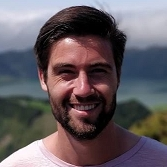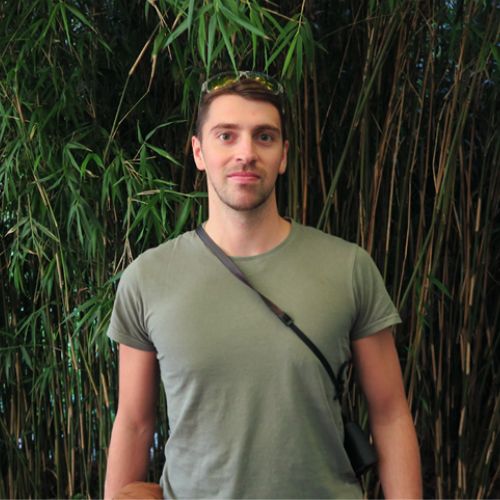Contents
Hello! Who are you?
Hi there, I’m Luke Jones. I currently live in the not-so-sunny seaside town of Porthcawl, South Wales with my partner of ten years. We’ve moved around a fair bit over that time, but often find ourselves back by the coast!
For work, I’m a Movement & Mobility Coach at Hero Movement, and I also do freelance writing for health and fitness brands on the side. I’ve had to take time off both over the last few years due to the health challenges we’ll get stuck into shortly.
In terms of hobbies and passions, I grew up playing various competitive sports, practicing martial arts, and adventuring in nature.
Movement has been a mainstay in my life for as long as I can remember – playing football, running, jumping, climbing, surfing, grappling, striking, and beyond. It’s something that’s always provided me with a way to decompress, quiet the mind, and find a sense of safety and belonging.
For a long time, being on the move was the main tool I used to stay somewhat mentally and physically stable. But like many things in life, the poison is in the dosage, and what serves us in some capacity can do the opposite when we rely on it too heavily.
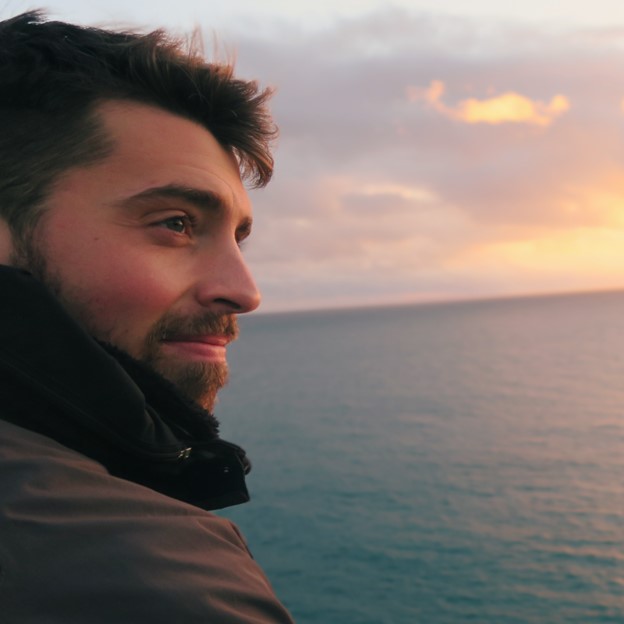
What is your struggle and when did it start?
My main struggles relate to my physical and mental health, particularly over the past few years or so. I currently have the diagnosis of long-covid, fibromyalgia / generalized chronic pain, with a side dish of anxiety and depression. As is the case for many others, things have been particularly rough since the pandemic in 2020 but were building long before.
Before we get into the current stuff, it may be worth us rewinding briefly. I generally had a healthy, happy childhood, but experienced various strange, unexplained health issues – mouth ulcers, frequent injuries, tummy troubles, allergy rashes, and migraine headaches.
I was also an extremely self-conscious, introverted, socially anxious child. I put a lot of pressure on myself, tended to keep things bottled up, and went through a few tricky periods of depression and anxiety throughout my teens.
In my early 20s, during a particularly stressful time at university in London, many of my physical and mental symptoms intensified. I hadn’t yet developed effective ways to deal with stressful situations and difficult emotions, so threw myself into what I knew best to numb the pain – intense physical training.
Whether it was grappling, running, or lifting weights, I pushed myself hard multiple times a day, gradually digging myself into the hole of overtraining. The physical stress only added to the mental toll I was already under, and as Bessel van der Kolk talks about, the body began to say no.
Doctors suspected I was dealing with various autoimmune conditions, causing gut issues, fatigue, and joint pain. Not a bundle of fun, as you can imagine, and my mental health suffered too.
To cut a long story slightly shorter, I spent the next decade in and out of flare-ups, trying to get to the root cause of the issues, experimenting with various dietary protocols, movement strategies, breathwork, and beyond. Spoiler alert: some of it helped, but a lot of it didn’t really work long-term.
With the groundwork set, let’s fast-forward to the main event! A few months after a mild Covid infection in December 2020, I developed symptoms of long-covid. This included an intense spike in fatigue, joint and muscle pain, brain fog, gut issues, food intolerances, insomnia, panic attacks, depression, and anxiety.
This would largely be the pattern for the next few years. I spent a lot of that time immobile, highly medicated, and shut off from the outside world. I was physically and mentally very unwell and once again unable to perform any of the physical activities that I had relied on so heavily to support my well-being.
I found myself stuck in a rut, and unfortunately, it’s been my experience (and that of countless others) that despite the debilitating symptoms, there’s not much in the way of medical help here in the UK for long-covid.
It’s brutal to think that there’s a whole wave of people who are now facing disability and feeling utterly hopeless, and they’ve been almost completely forgotten about.
I’m aware that this is not solely a long-covid phenomenon – many people with conditions like ME, chronic fatigue, and fibromyalgia are more than familiar with this experience. It’s not necessarily the fault of the doctors, but a reflection of the wider issues within the medical system at large.
Thankfully, as we’ll get into shortly, I’ve largely been able to claw my way out of the hole. That’s largely why I was excited to do this interview. I don’t claim to have all the answers, but hopefully, there will be one or two things that help someone else who’s currently going through the wringer.
How did this struggle make you feel at your worst moments?
The past few years have been challenging, to say the least.
At my lowest points, I was bedbound, completely reliant on loved ones, and unable to perform basic tasks. Too fatigued to walk, make myself food, or do simple jobs around the house. I was heavily medicated and for the most part, in too much mental and physical pain to properly rest or sleep.
At times, the infamous COVID brain fog was so severe I struggled to hold a conversation, let alone do any work. My tolerance for stress plummeted, and the slightest obstacle could set off a cascade of physical and mental symptoms.
I had all but lost hope, and on several occasions considered taking my own life. I perhaps would have done just that had I not had the unwavering support of loved ones.
My partner, in particular, was by my side through it all. Keeping me company, preparing my food, getting my supplements and medication ready, taking me to appointments, providing mental support day and night – all while working and managing housework. I could go on and on. She went above and beyond. I’ll be forever grateful, and can’t begin to thank her enough.
👉 Share your story: Help thousands of people around the world by sharing your own story. We would love to publish your interview and have a positive impact on the world together. Learn more here.
Was there a moment when you started to turn things around?
In the summer of 2022, I was in desperation mode, nearing the end of my tether. On top of the pain and fatigue, I’d developed a bunch of fun new symptoms, including adverse reactions to medications and food, and found myself at what I thought was a new rock bottom.
Even in the darkest times, however, there was still a small glimmer of hope (and a fair share of stubbornness) that kept me going. Kept me searching for answers.
One evening, I stumbled upon a Reddit post by someone who had been struggling with long-covid and seemed to have other existing symptoms that were similar to mine. This person had pretty much made a full recovery, which was promising to say the least.
Alongside some dietary changes, resting, and supplementation, they mentioned nervous system retraining and ‘emotional work’ as key factors that helped them get well again.
I had tried various mindfulness and breathwork-based practices over the years, but this approach was different. The basic theory is that at the root of various chronic pain and mental health symptoms often lies a dysregulated nervous system.
One that’s stuck in fight, flight, or freeze mode, largely as a result of unresolved traumas, repressed emotions, certain personality traits (often adaptations to traumas), and current life stressors.
The idea is that by learning more about the science of the nervous system and how it relates to chronic pain and starting to resolve any stored stress and emotional turmoil, the nervous system begins to settle and the volume dial on various chronic symptoms begins to turn down – if not turn off completely.
It may sound a bit ‘out there’, but this is based on a growing body of scientific literature and thousands of clinical case studies. Much of this work was pioneered by Dr. John Sarno in the 1980s and has since been built upon by the likes of Dr. Howards Schubiner, Alan Gordon, and many others.
Sarno coined the term ‘Tension Myositis Syndrome’ (TMS), which is also referred to these days as Mind Body Syndrome, Psychophysiological Disorders, and Stress-Induced Pain.
Sarno et al have successfully applied this TMS protocol to people struggling with various chronic pain conditions and mental health challenges that the Western biomedical model has historically struggled to devise effective treatments for.
These include various types of chronic muscle and joint pain, tendonitis, fibromyalgia, migraine headaches, IBS, chronic fatigue, certain allergy symptoms, anxiety, depression, and most recently, some cases of long-covid.
It’s important to note that stating the above syndromes are related to the brain and nervous system doesn’t mean that it’s all in your head. The symptoms are very real and often completely debilitating.
For me, this proposed mechanism offered a glimmer of hope that there was a way out, and it was something that I could actively participate in and have a degree of control over.
I’d like to again state that I’m not claiming this is the answer to all woes or the cure-all for every type of illness we might face. Western medicine does an incredible job of dealing with many acute illnesses and injuries.
I do, however, believe that this nervous system work can play a much greater role than we might first imagine when it comes to more chronic conditions, as my story and many other case studies illustrate.
What steps did you take to overcome your struggle?
Over the past year and a half, I’ve taken a deep dive into the world of TMS, emotional healing, and nervous system regulation. Unpicking old behavior patterns and laying down healthier, more sustainable ones. I’ll go into more detail as to what that entails shortly but suffice to say it’s made a huge difference.
There have been ups and downs. Periods of complete relief followed by vicious flare-ups. A few steps forward, then one or two back. Plenty of tears. But all in all, the trend has been in an upward direction, and I’ve started to get my life back.
I realize that despite the challenges, due to financial support and savings I’ve been in the privileged position to be able to take time off work in order to focus on recovery – a privilege that I know many people don’t have the luxury of.
At the time of this interview at the end of 2023, I’m no longer bedbound, in constant pain, or dealing with intense fatigue every day. My mental health challenges have vastly improved, and I’m regaining my independence bit by bit, week by week.
My capacity to cope with everyday life is expanding, and more often than not, I can do simple things like making meals and doing a few chores around the house.
As my symptoms have improved, I’ve gradually been able to get back to regular strength training. Back in the ocean now and again and out on the bike with my dad. Walking, occasionally running, clambering by the coast, swimming, and soon hoping to return to martial arts.
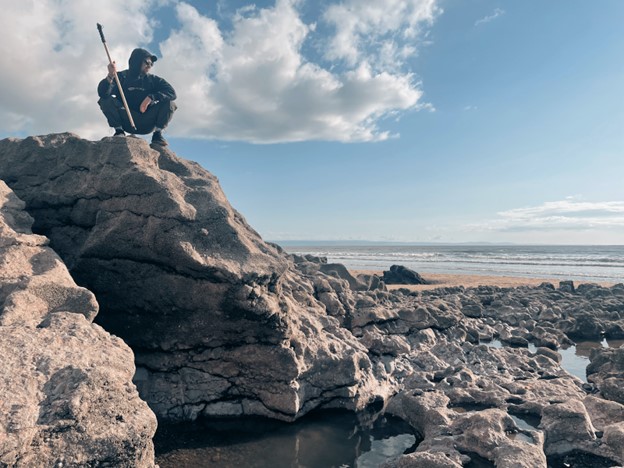
Things aren’t always great, and I still need to be mindful of over-exerting myself. I still have to plan in rests and say no to many things I’d like to say yes to. Some days are still a complete write-off, and some things are a work in progress, like integrating socially and getting back to work fully.
I can’t claim to be at 100%, but I’m certainly in a much better place compared to a year ago, and I occasionally get glimpses of well-being that I’d not experienced even pre-COVID.
There are so many things that have helped me on this journey, and I’d like to share some of them now. I’d like to reiterate, however, that I’m not claiming that the following will work for everyone, or suggesting that this is the answer to your particular challenges. What works for me may not work for you, but I do hope there’s one or two things of value in there at least.
All that said, I feel like my recovery largely comes down to five main pillars:
1. Education & acceptance
Learning about the most up-to-date pain science and the impact of a dysregulated nervous system on the body was a key first step toward healing. Although this wasn’t the case for me, there are many case studies where people obtained complete relief from lifelong chronic pain syndromes by taking this first step.
I knew that I had to gain an understanding of the mechanisms behind my symptoms and accept that this was what was going on in my body to be able to do the necessary work with conviction.
As I mentioned earlier, the works of Dr Sarno, Schubiner, Alan Gordon, and many others were hugely influential. I can give a more comprehensive list of books, podcasts, and other resources later on.
It’s perhaps important for me to note that there were still many times over the past year when my belief wavered and I found myself again looking towards more physical explanations and treatment modalities.
However, I consulted with various therapists and medical professionals who confirmed that I was most likely dealing with nervous system-related pain and TMS as opposed to the previously suspected autoimmune issues or any other purely structural issue.
Further medical investigations confirmed this. I also kept coming back to the literature, case studies, and other recovery stories and slowly began to gather evidence.
A few key markers of dealing with nervous system-based symptoms include:
- The symptoms move around the body.
- Symptoms increase in times of stress.
- Symptoms are often worse at a particular time of day.
- There is a history of unresolved stress or trauma.
- There are certain personality traits, such as people pleasing, perfectionism, or catastrophizing.
2. Cultivating safety
Another key facet of my recovery was integrating regular practices to help shift my body from a fight-flight-freeze response, into a more parasympathetic, rest and digest state.
This was an essential step in the short term to help me build my capacity to cope with the emotional work to come. In the long term, it’s helped me find more balance and improved my ability to recover after intentionally or unintentionally experiencing stress or challenging emotions.
A few of the practices that have helped me downregulate and promote a sense of safety include:
- EFT Tapping. This was particularly helpful whenever symptoms were high. It involves tapping on certain acupressure points while repeating key phrases to help find a state of calm acceptance. I was skeptical at first, but it’s had a powerful effect.
- Breathwork. I use various techniques, but the main principle comes back to slowing the inhale and extending the exhale whilst reminding myself that I’m safe.
- Yoga Nidra. A body scan technique that helped me reconnect with my body and feel what it really meant to deeply rest.
- Self-Compassion Meditation. A key factor in altering my self-talk, reducing perfectionist tendencies and unnecessary pressure.
- Feldenkrais Method. Feldenkrais’s lessons allowed me to introduce novel movement patterns in a slow, controlled way. It’s had a profound soothing effect on my nervous system and acted as a gateway back into regular physical activity.
I don’t think all of the above are essential – they’re just what worked for me at different points on my recovery journey. For me, I knew a certain practice was effective when it would cause me to yawn, sigh, feel sleepy, and make my eyes water – all signs that the nervous system is shifting towards a more parasympathetic, rest and digest state.
3. Emotional expression
As well as calming the nervous system, a big part of the work over the past year or so has been around changing my relationship with my emotions. For a long time, I had pushed away and suppressed certain emotions such as anger, sadness, and guilt, leading to a buildup of tension and potentially resulting in many of the physical and mental symptoms.
The two main tools I used to support my emotional well-being and reduce the total load placed on the body include:
Therapeutic journaling. I went through an extended period of daily writing for 20-30 mins, exploring past and present stressors or traumas, and any personality traits that were adaptations to those events.
I used various forms of journaling, from freeform writing to the more structured Intensive Short-Term Dynamic Psychotherapy (ISTDP) method shared by Dr Howard Schubiner. The idea was to remind myself that it’s okay to feel and express difficult emotions – I don’t have to always push them down.
Therapy. I consulted with a few SIRPA therapists over the past year, a UK-based organization helping people with chronic pain regain their well-being. Therapy was and continues to be immensely helpful. We’ve used a variety of tools, but I found particular benefit in the Internal Family System model by Dr Richard Schwartz.
This is based upon the idea that we all have a mind that’s made up of multiple parts, some of which may be exiles from psychological trauma, and others may be managers or exiles trying to protect the wounded parts. Our ultimate aim is to create a cooperative and trusting relationship between the core Self and each part.
4. Pain reprocessing
Here, the aim was to work towards becoming a neutral observer in the face of challenging symptoms and emotions. Pain Reprocessing Therapy is built upon the basis that fear of the symptoms only acts as a fuel that intensifies them or makes them stick around longer.
One of the main practical elements here is the practice of somatic tracking, which involves turning your attention toward symptoms, sensations, or emotions while endeavoring to reserve judgment. It was difficult at first, but over time helped me become more curious about the sensations in my body and less carried away with the story.
There were many times when the symptoms were too intense to sit with, so safety behaviors such as distraction or medication were needed. But over time, I’ve been able to rely more on my ability to be present with symptoms, as opposed to turning from them, and the volume has subsequently turned down.
5. Reclaiming & expanding
As I started to rebuild my capacity, it was important for me to begin thinking about what came next. To start taking small steps outside of my comfort zone, showing my nervous system that I was not broken. That I was capable of pushing the boundaries a bit, and I had the tools to recover.
A big thing for me was getting back to movement. At first, this looked like occasional Feldenkrais lessons and gentle stretching. I slowly began to experiment with light strength training for a few minutes at a time, sprinkling mini movement breaks throughout my day, and gradually increased the distance of my walks – first completely assisted, then with a stick.
I experienced a lot of resistance from my body in the form of flare-ups but tried my best to keep things going and not fall back into the fear spiral.
Fast forward to today, I’ve been able to gradually build up to regular strength training. I can also run, cycle, and swim again, and am planning to test the waters with martial arts in the new year. Again, I’m not at 100%, but the trend is positive.
I’ve also been able to do a similar thing with my diet, going from a fear-based approach with multiple restrictions and food intolerances; to enjoying my food once more and eating pretty much anything I fancy.
My plan moving forward is to continue this reclamation process with my social life and my career. I’m not back up to full capacity in those areas, but am excited to continue taking small steps in the new year.
Have you shared any of this with people around you in real life?
As I touched on above, my partner was there through it all. Helping me, picking me up, learning, and growing along with me. My family has also been a huge support, and I likely wouldn’t have been able to do things I needed to do to get myself well without their love and patience.
Over the past few months, as my symptoms have improved and my confidence has grown, I’ve slowly started to open up to some close friends. I’m now at a place where I feel I can share my story in a more public way. I think that’s another sign of healing – becoming more comfortable with who I am and what I’ve gone through.
Although there are still ups and downs, I’m currently in a much less vulnerable place and feel much more capable of talking about what I’ve been through, warts and all. I know that hearing recovery stories was an important part of my journey, so I hope this can do the same for someone else in some form.
If you could give a single piece of advice to someone else that struggles, what would that be?
I’m hesitant to give advice, as I know we all face different circumstances and challenges. But something that would have helped me earlier in my recovery journey would have been the knowledge that the physical is not everything.
Those habits that support our physical health, such as diet, sleep, movement, etc are just one piece of the puzzle. Equally important – if not more so – is our emotional well-being.
I’ve learned that it’s essential for me to be able to observe and allow the whole spectrum of human emotions. Anger, fear, sadness, guilt. If we don’t know how to feel and express those in a healthy way, and instead push them down or distract ourselves, we may find that they contribute to or cause mental and physical health issues down the line.
So my big takeaway is to prioritize sitting with and feeling emotions. And amongst the busyness of everyday life, endeavor to make time to decompress and remind your nervous system that you are safe, in whatever way works for you.
Other than that, I think it’s important to not underestimate the value of taking small steps, being patient, and endeavoring to be kind to yourself.
What have been the most influential books, podcasts, YouTube channels, or other resources for you?
- The Mind Body Prescription by Dr. John Sarno: A great overview of the theories behind Tension Myositis Syndrome and the way the brain and nervous system can generate a wide range of very real, debilitating symptoms as a protective mechanism.
- Unlearn Your Pain by Dr. Howard Schubiner: This builds upon Sarno’s theories with a more up-to-date understanding of pain science and practical steps to follow.
- Self Help for Your Nerves by Dr. Claire Weeks: One that I found great comfort in when dealing with periods of intense anxiety and depression. I found the idea of ‘floating’ through anxiety particularly helpful.
- The Way Out by Alan Gordon: A great overview of pain reprocessing therapy and somatic tracking techniques.
- The Curable App: An excellent collection of educational materials and practical exercises for overcoming various chronic pain syndromes and mental health challenges.
- SIRPA: Contains some excellent resources for chronic pain sufferers, plus a database of qualified trauma and pain-informed therapists.
Where can we go to learn more about you?
If this interview helped or if you have any questions about my story or the tools and resources mentioned, please get in touch – I’d love to hear from you.
You can find me over at my website Hero Movement, where I explore and share ideas in all things movement, well-being, and adventure. I have a bunch of articles and videos over there, as well as my app which contains my movement and mobility programs, as well as follow-along breathwork and mediations.
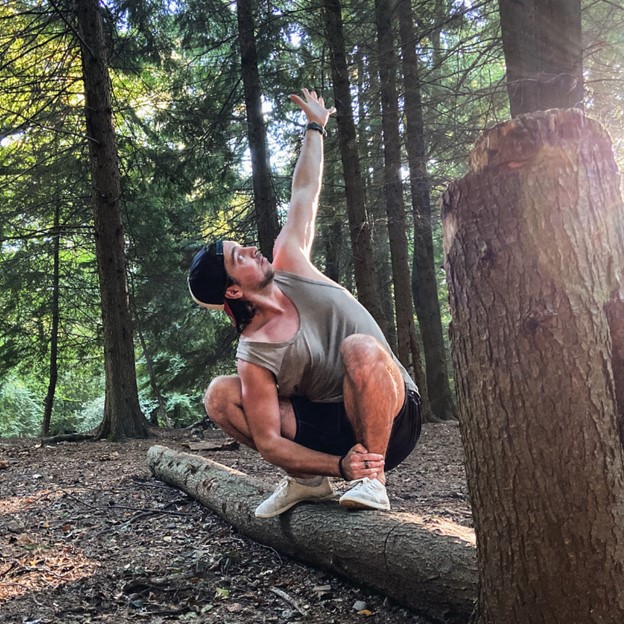
I’m also currently documenting my recovery story in a Rebuild series there, and putting together more resources to hopefully help others who have struggled with chronic pain and other mental & physical challenges.
In terms of socials, I’m on Instagram at @lukejonesmove, but I don’t use it all that frequently.
Thanks to the guys at Tracking Happiness for the opportunity to do this interview – I hope it’s been somewhat helpful to someone out there.
Want more interviews?
Continue reading our inspiring case studies and learn how to overcome mental health struggles in a positive way!
Want to help others with your story? We would love to publish your interview and have a positive impact on the world together. Learn more here.
